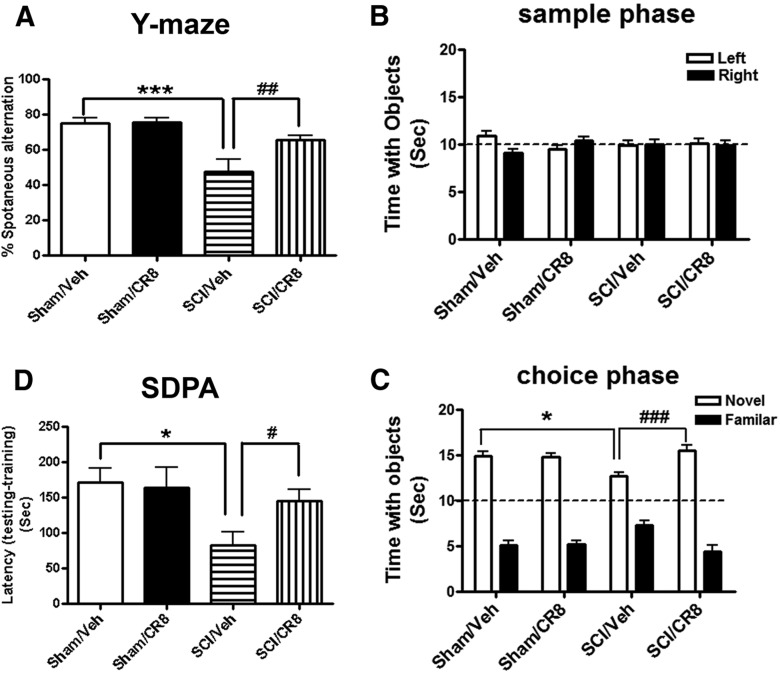Figure 3.
Assessment of spatial, emotional, or nonspatial memory using the Y-maze spontaneous alteration (A), NOR (B, C), and SDPA (D) tests. A, Sham mice showed intact spatial working memory function because they all performed significantly better than the 50% chance level (n = 10). SCI mice (n = 14, ***p < 0.001) showed significantly reduced percentages of spontaneous alteration in Y-maze test, whereas CR8-treated mice (n = 14, ###p < 0.01) had a significantly increased percentage of spontaneous alteration compared with SCI/Vehicle mice at 9 weeks after injury. B, Injured or uninjured mice spent equal time with the two identical objects during the sample phase. C, SCI/Vehicle mice (n = 17) spent significantly less time with the novel object than mice in the Sham/Vehicle group (n = 10, *p < 0.05) and the SCI/CR8 group (n = 14, ###p < 0.001). D, During testing for their memory of the aversive experiences 24 h later, SCI mice (n = 14, *p < 0.05) showed significant reduced latency to step down from the platform compared with Sham mice (n = 10). CR8 treatment (n = 14, #p < 0.05) caused a significant increased latency compared with SCI/Vehicle mice.

